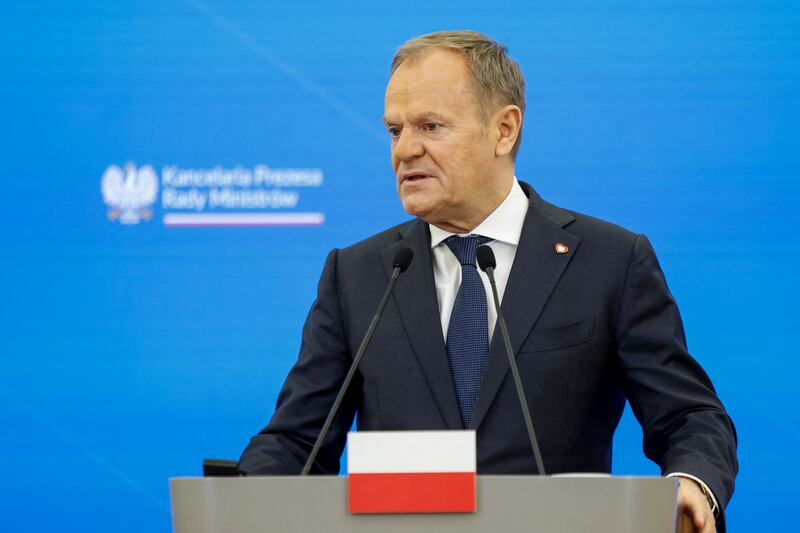“Most likely, this war will at some stage end at the negotiating table,” Nato’s secretary general Jens Stoltenberg said on Wednesday, as he briefed journalists on the latest fallout from Russia’s invasion of Ukraine.
This week, China reiterated a call for such talks to happen now, as leaders of the world’s 20 major economies met in Indonesia for the G20.
When Ukraine’s president, Volodymyr Zelenskiy, addressed the meeting, he came prepared with a 10-point proposal he said could be the basis of such talks and an eventual peace agreement.
He asked for Russia to hand control of the Zaporizhzhia nuclear power plant to the International Atomic Energy Agency and Ukrainian personnel, the extension of an agreement that Ukraine can export grain through its ports, the release of all prisoners and deportees held by Russia, and the withdrawal of all Russian troops from Ukrainian territory.
‘Utterly fearless’: tributes paid to ‘freedom fighter’ Robert Deegan, Irish soldier killed in Ukraine
Former restaurant housing almost 150 Ukrainians to be shut over Christmas due to fire safety concerns
EU needs to be less ‘polite’ in resisting Russian attempts to sway elections
Polish PM Donald Tusk emerges to take leading role on Ukraine
He also asked for a special tribunal to prosecute Russia for the crime of aggression and compensation for war damage, and a security guarantee for Ukraine against future invasion.
“I want this aggressive Russian war to end justly and on the basis of the UN Charter and international law,” he said, according to an official copy of his speech.
Russia quickly rejected the central premise of the proposal.
“No,” Russian deputy foreign affairs minister Alexander Grushko told Russian media when asked about the withdrawal of troops. “Such conditions are unacceptable. Our president has said multiple times that we are ready for negotiations, but they need to take the situation on the ground into account.”
Zelenskiy knew what he was doing by using his moment in front of the world leaders to lay out his hopes for peace. In the face of a persistent counter-narrative spread by Moscow and Beijing, he was seeking to make clear that the war was a choice made by Russia.
“If Russia opposes our peace formula, you will see that it only wants war,” Zelenskiy told the leaders.
A sweeping counter-offensive by Ukraine has reclaimed 74,443sq km of territory previously seized by Russia, according to monitoring by the Institute for the Study of War. That’s a territory larger than the Republic of Ireland.
Jubilant scenes were captured by media as those who were living under occupation greeted Ukrainian troops in the recaptured cities and towns, many of them declared Russian territory in dubious annexation bills passed by Russia’s State Duma.
Nevertheless, Russia still retains control of at least as much territory again; land that is internationally recognised as part of Ukraine.
European officials and diplomats expect Ukraine’s gains to slow. As winter takes hold, they talk of the conflict settling into a grind that could last through next year and beyond.
Russia cannot repeat its spring offensive, having burned through equipment and experienced men, and with its ability to rebuild its forces tightly constrained by the isolation imposed by international sanctions.
But its forces will be clustered more thickly in the smaller territory it still clings on to, meaning Ukraine will have fewer opportunities to sweep through sparsely-held land, as before.
Bitter and thwarted, Moscow is now focusing its attacks on civilian infrastructure, destroying Ukraine’s ability to provide light and heat for its population in the hopes of wearing down their will along with the support of countries like Ireland that are logistically struggling to keep up with even the last migration wave.
The next steps on the European Union’s agenda are to agree an international price cap for Russian oil, a fresh round of sanctions perhaps by the end of the month, and financial support to keep the struggling Ukrainian state functioning.
For Nato, the priority is to increase Ukraine’s air defences to allow it to better fend off Russia’s waves of missile attack, and continue sending military aid.
Their rationale for continuing to provide arms to Ukraine is that Russia will only come to the negotiating table and agree an acceptable peace if it is forced to.
“The outcome of those negotiations is closely and fundamentally linked to the strength on the battlefield,” Stoltenberg said.
“So the best way we can ensure, [or] maximise the likelihood for a peaceful negotiated solution, is to support Ukrainians on the battlefield. Because that will maximise the probability for them achieving an acceptable negotiated solution on the negotiating table.”
He reiterated that the war could end tomorrow if Moscow so chose.
“If president [Vladimir] Putin and Russia stops fighting, then we will have peace,” he concluded. “But if president Zelenskiy and Ukrainians stop fighting, then Ukraine will cease to exist as an independent sovereign nation.”
![Jens Stoltenberg, Nato secretary general: 'The best way we can ensure, [or] maximise the likelihood for a peaceful negotiated solution, is to support Ukrainians on the battlefield.' Photographer: Valeria Mongelli/Bloomberg](https://www.irishtimes.com/resizer/v2/4ILGL27UXVZB6UJ6X5EX2MUKEI.jpg?auth=562d114e0a2c168ddb952c2a1a852f0d112a3996d8445a45fe97517f93401ff7&smart=true&width=1024&height=683)


